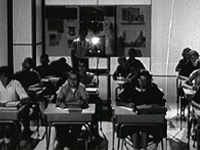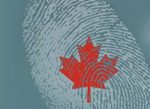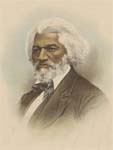What Do Students Learn from Historical Feature Films?

Historical feature films are a popular tool history teachers use to engage their students. But what is it that students actually learn from the films they watch? Peter Seixas, a historian and professor of education at the University of British Columbia, showed that while students often empathize with the past they see on the screen, they also approach film history uncritically. Sometimes they even interpret a film's presentation of history to be as it actually happened. In a landmark article, Seixas described the difficulty students have in analyzing films for historical accuracy.
Contemporary Films vs. Old Films
Seixas showed ten students Dances with Wolves (1990), directed by and starring Kevin Costner, and John Ford's The Searchers (1956), starring John Wayne. Students watched and summarized segments from each film. After showing each film, students answered questions about the film's historical accuracy.
Students found Dances with Wolves to be more accurate than The Searchers for two main reasons—reasons that have more to do with film technique and contemporary beliefs than historical accuracy. Dances with Wolves used modern techniques and promoted a contemporary interpretation of the past. Students noted that the use of blood in violent scenes and the quality of the acting made this film more believable than the older John Wayne film.
Students criticized The Searchers for poor acting, and outdated cinematography (e.g., old folky music). Students also found Dances with Wolves to be more believable because they shared the film's critique of America's treatment of Native Americans. On the other hand, The Searchers' negative representation of women and Native Americans caused many students to question its historical accuracy.
Contemporary Films and Old Films
Seixas argued that students' acceptance of Dances with Wolves as historically accurate reflects a larger problem with showing films in history class. Students are often so engaged by such films that they fail to question the films' historical merits. They blindly accept such films as accurate mirrors of the past. However, Seixas found that The Searchers' blatant misrepresentation of the past prompted students to question the historical accuracy of Dances with Wolves. After viewing both films students still found Dances with Wolves to be more accurate than The Searchers—yet now they at least questioned Dances with Wolves, saying they needed more information to determine its truthfulness.
Historical Films and The Classroom
The visual imagery and powerful audio of film can engage students in ways that lectures and textbooks cannot. However, what makes these films engaging—their use of cutting-edge techniques and their contemporary perspective on the past—often results in students passively accepting these stories as historical truth. So how then can films be used to promote a more critical stance?
Seixas' research suggests that one place to begin is for history students to learn to question how the past is presented in this media. To do this, teachers can have students compare an older film on the same topic with a more contemporary film. This juxtaposition helps students see that no film is a direct mirror to the past.
- Use older films in the beginning of the year as a touchstone experience for critiquing a film's accuracy and realism.
- Provide students with the vocabulary, concepts and approaches needed to discuss both the cinematic conventions as well as the historical accuracy of the film. One important concept for students to learn is that the time period in which a film is created influences the way it depicts an historical event.
- Use historical documents in conjunction with a film to provide students with information to help them determine the historical accuracy of the film.
Initially students accepted Dances with Wolves uncritically as historical truth. One student stated that Dances with Wolves taught her "things I didn't know before . . . things about the culture."
After seeing The Searchers, students questioned the accuracy of Dances with Wolves. Students also recognized the need for more information to determine the truthfulness of Dances with Wolves.
Student: I can't really say, well, if I had to say which one is more accurate I'd probably say Dances with Wolves but I'd probably just say that because it's more modern.
Researcher: When you saw Dances with Wolves originally . . . did the question ever occur to you how accurate it is?
Student: No, because it was just a show that I was watching and I was so wrapped up in feeling and crying that I didn't stop . . . to wonder if this is right. In The Searchers, it's a lot easier.
Mark C. Carnes ed., The Past Imperfect: History According to the Movies, (New York, NY: Holt,1996).
Natalie Davis, Slaves on Screen: Film and Historical Vision, (Cambridge, Massachusetts: Harvard University Press, 2000).
Peter Seixas, "Confronting the Moral Frames of Popular Film: Young People Respond to Historical Revisionism," American Journal of Education, 102, no. 3 (May, 1994):26185.








